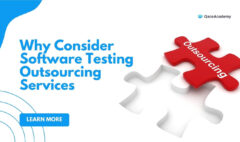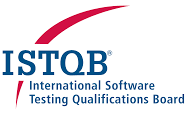HOW TO MAKE AN EFFECTIVE TEST AUTOMATION STRATEGY
HOW TO MAKE AN EFFECTIVE TEST AUTOMATION STRATEGY
Creating an effective test automation strategy involves careful planning and consideration of various factors. Here are some steps to help you develop an effective test automation strategy:
- Define your objectives: Clearly define your objectives for test automation. Identify the key goals you want to achieve through automation, such as improving test coverage, increasing testing efficiency, reducing time-to-market, or enhancing software quality.
- Identify the right tests for automation: Not all tests are suitable for automation. Identify tests that are repetitive, time-consuming, or critical to the application’s functionality. Focus on automating tests that will provide maximum value and return on investment.
- Select appropriate test automation tools: Evaluate and choose the right test automation tools that align with your project requirements. Consider factors such as supported platforms, scripting languages, integration capabilities, ease of use, and community support.
- Determine the scope and coverage: Define the scope of your test automation efforts. Identify the key functionalities, modules, or areas that will be covered by automation. Also, consider the different types of testing you want to automate, such as functional testing, regression testing, performance testing, or integration testing.
- Establish a framework and architecture: Develop a test automation framework that provides a structured approach for test creation, execution, and maintenance. Define the overall architecture and design patterns that will be used for your automation solution. This includes decisions on data management, test environment setup, reporting mechanisms, and test data generation.
- Define standards and guidelines: Establish coding standards and guidelines for test automation scripts. This ensures consistency, maintainability, and scalability of the automation efforts. Consider factors such as naming conventions, code structure, error handling, and documentation.
- Prioritize test cases: Prioritize your test cases based on their importance, risk, and impact. Start with high-priority test cases and gradually expand the test suite. This approach allows you to identify critical issues early and gain confidence in the automation framework before scaling up.
- Plan for maintenance and updates: Automation scripts require regular maintenance and updates as the application evolves. Set up a process to review and update scripts to accommodate changes in the application’s functionality, user interfaces, or underlying technologies. This ensures the longevity and effectiveness of your automation efforts.
- Implement continuous integration and delivery: Integrate test automation into your continuous integration and delivery (CI/CD) pipeline. Automate the execution of tests as part of the build and deployment process to catch issues early and ensure a smooth release cycle.
- Monitor and analyze test results: Establish mechanisms to monitor and analyze test results. Capture relevant metrics such as test coverage, pass/fail rates, and execution time. Use these insights to identify bottlenecks, optimize test suites, and improve the overall efficiency and effectiveness of your automation strategy.
Remember, an effective test automation strategy is not a one-time activity. It requires continuous evaluation, improvement, and adaptation to meet the evolving needs of your software development lifecycle.











